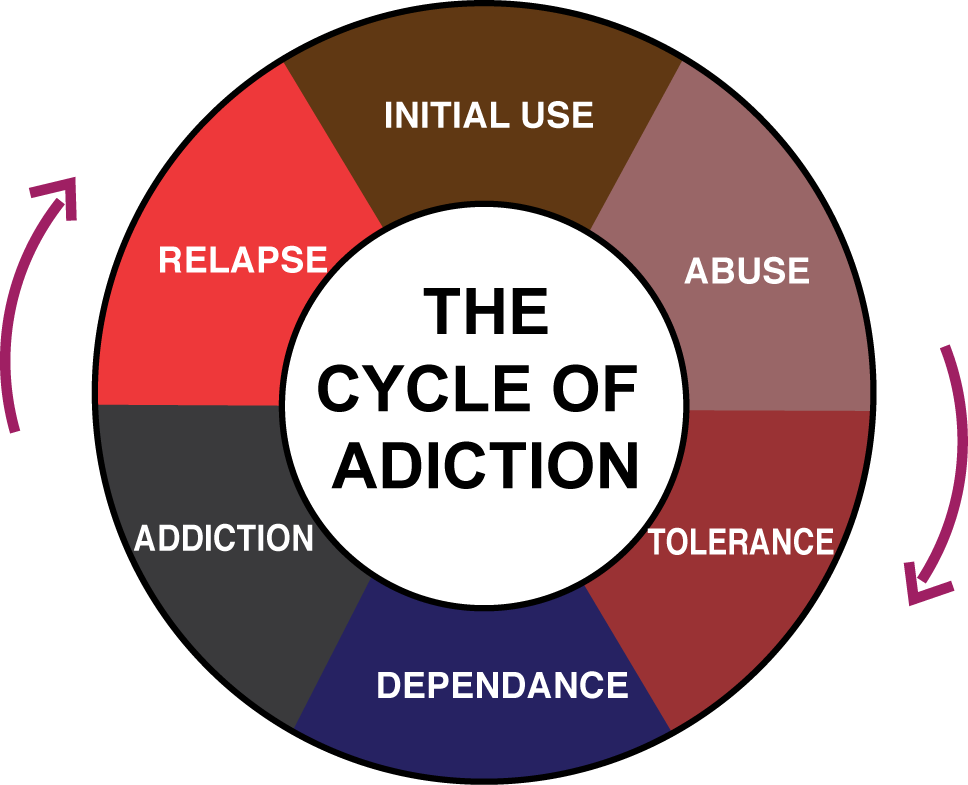Stages of the Addiction Cycle:
1. Initial Use:
This is the first stage where a person begins using a substance, often influenced by factors like curiosity, social pressure, or attempts to cope with stress.
2. Abuse:
Continued use of the substance leads to problematic patterns of use, including increased frequency and quantity, and negative consequences in various aspects of life.
3. Tolerance:
The body adapts to the substance, requiring more of it to achieve the same effects, which can lead to increased consumption and potential for dependence.
4. Dependence:
The body and mind become reliant on the substance, experiencing withdrawal symptoms when use is reduced or stopped.
5. Addiction:
This stage is characterized by compulsive substance seeking and use despite negative consequences, indicating a loss of control over substance use.
6. Relapse:
A return to substance use after a period of abstinence, often triggered by cravings, stress, or environmental cues, demonstrating the cyclical nature of addiction.
Breaking the Cycle:
Seeking Help:
Recognizing the cycle and seeking professional help from addiction treatment centers or support groups is a crucial first step according to Vogue Recovery Center.
Therapy and Counseling:
Therapy can help individuals understand the root causes of their addiction, develop coping mechanisms, and learn strategies for relapse prevention.
Support Groups:
Participating in support groups like Alcoholics Anonymous (AA) or Narcotics Anonymous (NA) provides a safe space for sharing experiences, receiving support, and building a strong recovery network.
Medication-Assisted Treatment:
In some cases, medication can be used to manage withdrawal symptoms, reduce cravings, and support long-term recovery.
Lifestyle Changes:
Adopting a healthy lifestyle, including regular exercise, a balanced diet, and stress management techniques, can help individuals regain control and build a strong foundation for recovery.
